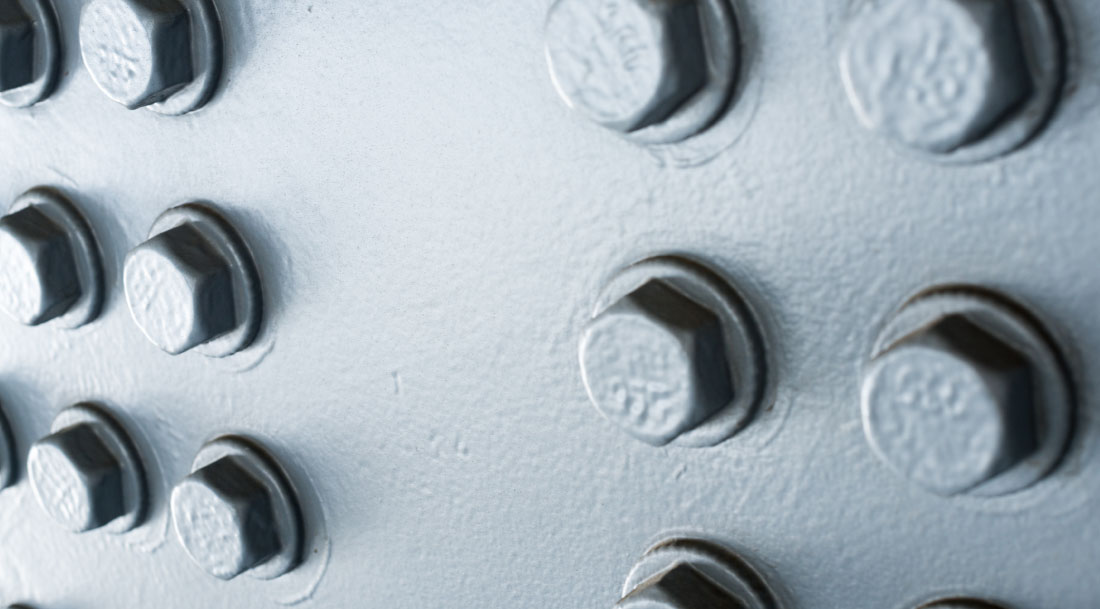Things to consider when coating steel and other metals

In this article we explore how to get the most from coatings for steel, critical steps in surface preparation and identify primers from Pronto’s range that are ideal for different applications.
Preparation
In all cases, surfaces should be cleaned and degreased prior to preparation. Depending on the asset, it may be necessary to steam clean first, to remove any obvious surface contamination. When this has been carried out and the surfaces are dry, degreasing can commence.
Degreasing
A suitable degreasing material should be liberally applied to the surface and allowed to absorb for a few minutes to loosen the surface contaminants. After this, the degreasing material should be removed using clean cloths or better still, absorbent paper towel that is lint free and more likely to be changed regularly to avoid a build-up of contaminants in the solvent.
Be wary that applied degreasing material does not dry on the surface by evaporation as this does not remove the possible contamination. Degreasing must be carried out before any flatting or surface preparation.
Sanding or flatting carried out on a dirty surface will result in any contamination being spread across the surface and may also force this contamination into the flatting marks. If this occurs, the surface could retain the contaminating materials and can cause adhesion and drying problems once a paint system is applied over the affected area.
Once a surface has been degreased it should be kept as clean as possible. After preparing a surface, remove flatting residues and wipe once more with a light application of degreasing material to ensure the removal of any remaining contaminates.
Regardless of the type of substrate, the main requirement or preparation is to roughen the surface in order to provide a key for any paint film. A poorly prepared surface will reduce the adhesion of a paint film, leaving it open to premature breakdown and allow, in the case of metal, corrosion to develop.
For steel, thoroughly abrade the surface to provide an improved key. Any rust present should be completely removed by the most appropriate method prior to painting.
Primed surfaces
Flat thoroughly with a suitable grade of abrasive paper (or disc and orbital sander) to provide a good key. Surfaces already primed at source of manufacture can present problems in that the primer may have been applied over a poorly prepared base.
Rust may be present or the primer may be of a low quality. If there is any suspicion about the quality of the adhesion of a works primer it should be removed. Applying a paint system over a suspect base will not improve its quality or longevity.
Blast Cleaning
Blast cleaning is an efficient method of surface preparation and has two main functions, to remove surface contamination (rust, mill scale) and obtain the required degree of cleanliness to produce a surface profile to improve the adhesion of the paint system.
Cleanliness
The accepted standard of defining the degree of cleanliness obtained is Swedish Standard S.I.S. 055900- 1967. The two degrees of cleanliness most quoted from this standard are SA21⁄2 in which the surface is nearly white metal–usually accepted as the commercial standard- and SA3 where it is blasted to white metal with no contamination present.
Surface Profile
This may be described as the degree of roughness of a surface after blasting. The peak to valley height of the surface-this is difficult to measure, is expressed in microns, a normal surface profile being in the range of 25-50 microns.
_______________________________________________
Primers for Steel
Below are recommended metal primers for steel topcoat application.
Quick Drying Industrial Zinc Phosphate Primer (200:026)
A fast drying zinc phosphate primer overcoatable with a range of Q.D. finishes that gives excellent protection to bare steelwork and fabrications. Comes in multiple colours and 5L and 20L cans.
Access technical specification here.
Quick Drying High Solids Industrial Primer (207:516)
This is a primer for serious applicators operating in structural steel and metals. It is available for steel fabricators preferring a phosphate-based anticorrosive protection system with resistance to certain chemicals, greases and oils. Comes in 500L lots in red and grey.
Access technical specification here.
2 Pack Epoxy MIO Primer (103:006)
An epoxy resin system with excellent anti-corrosive properties, designed to be a relatively quick drying two-component primer for various paint systems over shot blasted steel. Comes in silver and dark grey. Get in touch for minimum order.
Access technical specification here.
________________________________________________
When you need to paint metal, adequate surface preparation will make all the difference in the quality of your paint job and in how long it lasts. Proper preparation is critical as even the highest quality paints and custom metal coatings will not last.
Use this advice and connect with our experts if you need more support.
Recommended additional reading
Spotlight on steelwork coatings, click here
How to choose the right paint systems to protect your steel structure, click here